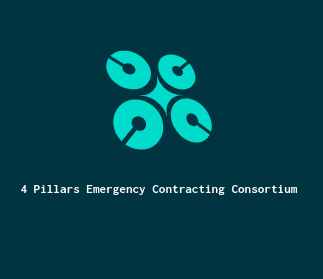Does the Government Use Private Money Lenders to drive Economic Development in Opportunity Zones? And What Is the Emergency Capital Investment Program (ECIP)?

The U.S. government collaborates with private lenders to drive economic development in cities and rural areas, primarily through programs that incentivize private capital to underserved regions. Key initiatives include:
- State Small Business Credit Initiative (SSBCI): The SSBCI, reauthorized under the American Rescue Plan with $10 billion, provides flexible funding for states and tribes to boost small business financing. It supports community-focused lenders, including community development financial institutions (CDFIs), to address local capital shortages. With this funding, private lenders help improve capital access for small businesses, focusing on disadvantaged communities to spur job growth and reduce poverty. Read:
U.S. Department of the Treasury Highlights the Benefits of Public-Private Partnerships for Main Street and Underserved Rural and Urban Communities
https://home.treasury.gov/news/press-releases/jy2578
How cities, states, and tribes can boost entrepreneurship via the American Rescue Plan https://www.brookings.edu/articles/how-cities-states-and-tribes-can-boost-entrepreneurship-via-the-american-rescue-plan - Opportunity Zones: Created under the 2017 Tax Cuts and Jobs Act, Opportunity Zones encourage private investment in economically distressed communities by offering capital gains tax incentives. These zones attract funds that target projects like affordable housing, business growth, and infrastructure, revitalizing local economies and helping lift communities out of poverty.
Opportunity Zones https://www.eda.gov/grant-resources/comprehensive-economic-development-strategy/opportunity-zones - Emergency Capital Investment Program (ECIP): This $9 billion program, under the U.S. Treasury, supports private lenders such as minority depository institutions (MDIs) and CDFIs. ECIP aims to multiply available funds through private capital, creating additional lending capacity—estimated at over $90 billion—to support underserved communities. This program addresses barriers to financial inclusion, thus boosting economic resilience in affected areas.
How US community lenders are tapping impact capital to leverage federal investments https://impactalpha.com/how-us-community-lenders-are-tapping-impact-capital-to-leverage-federal-investments
Budget Impact
In total, these programs direct tens of billions toward economic recovery and growth:
- SSBCI: $10 billion allocated to states and tribes.
- Opportunity Zones: Private investments in these zones reached over $75 billion in 2020.
- ECIP: With $9 billion in federal investment, leveraged for substantial local lending.
Examples of Impactful Lending Contracts
- Invest Detroit: Through Opportunity Zone funding and SSBCI support, Invest Detroit has revitalized the Corktown area, spurring job growth and business expansion.
- Enterprise Community Partners: Partnered with SSBCI funding, this CDFI has improved affordable housing access across multiple cities, addressing poverty in urban areas.
- HOPE Credit Union: Leveraging ECIP funds, HOPE serves the Deep South, significantly improving financial access and small business funding for Black and low-income residents, thus reducing poverty and enhancing local economic stability.
These partnerships illustrate how federal and private funds can effectively lift economically challenged regions, driving both social and financial returns through strategic community investments.




